The Hindu festival of Holi is a celebration that is meant to transcend all boundaries and evoke a joyous mood of unity and togetherness. Yet, every year, the eve of Holi is marred by violent reports of sexual harassment and molestation across the country.
On 9th March, a Japanese woman shared a video of her being harassed by 3 youths during Holi. One of the youths mashed eggs on her head while the others smeared colours on her non-consensually.
She mentioned that she is well aware of the lack of women’s safety on the day of Holi. So she decided to participate in the festival of Holi with 35 of her other friends and yet it was not enough for her to stay safe. In a series of tweets following the incident, she writes: “I had heard that it was very dangerous for a woman to go out alone during the daytime at the Holi festival, an Indian festival that I participated in, so I participated in the event with a total of 35 other friends. Unfortunately, this kind of situation happened“.
Any celebration can only become true to its foundational ethos of joyfulness if only people who participate learn to accommodate even those who do not share similar views as them. Without respecting the dignity of an individual, all celebrations ultimately become a public display of patriarchal violence that enables the subjugation of women and minorities in the nation. Such an approach towards public life through festivals once again proves how women are always barred from the public domain of celebration.
She further clarified that one of her companions while trying to help her, recorded the incident and later she uploaded it on Twitter. “The video that triggered the fire this time was not a scene in which a dedicated cameraman was being attacked on purpose, but a video was taken by chance while another Japanese event participant was filming the scenery of the festival. I would appreciate it if you could understand that I was not trying to convey the abnormalities and damages of the Holi festival in India“.
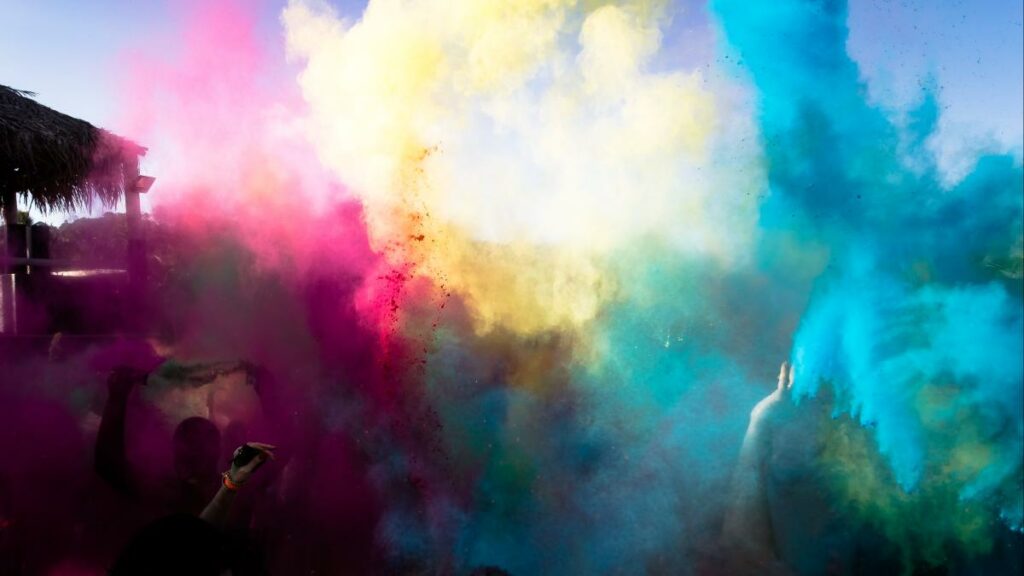
As is often the case with India, the nation received this incident in the throes of conflicting sentiment. While many condemned the outrageous behaviour of the youths, many took offence to her complaints.
Also Read: What Diwali Celebrations Mean For Many Queer People
As a response, the woman took the video from the internet and tweeted the following: “On March 9th, I tweeted a video of the Indian festival Holi, but after that, the number of RTs and DMs increased more than I had imagined, and I was terrified, so I deleted the tweet. We sincerely apologise to those who were offended by the video.“
As she spoke out against the violence that she faced, many accused her of spoiling the ethos of the festival. To de-escalate the matter, the woman felt it was necessary to apologise for making the incident of harassment public. The internet reaction made her believe the onus of her safety is on her and she invited such violence upon herself simply by choosing to participate in the festival of Holi in one of the most unsafe cities in India.
It is not just Holi, but a public celebration of all religious and political festivals tends to take a grotesque image through its enabling culture of violence and harassment. In the current political scenario, it is only a small section of the population, mainly men from the upper caste and Hindu backgrounds, are allowed to occupy the public domain and celebrate. While at the same time, women and minorities are expected to stay indoors and remove themselves from the public sphere so as to not invite any unwanted attention to them.
However, many netizens sided with the woman and condemned those who defended such heinous behaviours of the youths. Many called for stringent police actions and appealed to make public spaces safer for women and minorities during such festivals and celebrations. While Holi is supposed to be an evocation of Spring and a celebration of the love of Radha and Krishna, the essence of it often gets culturally lost through such incidents.
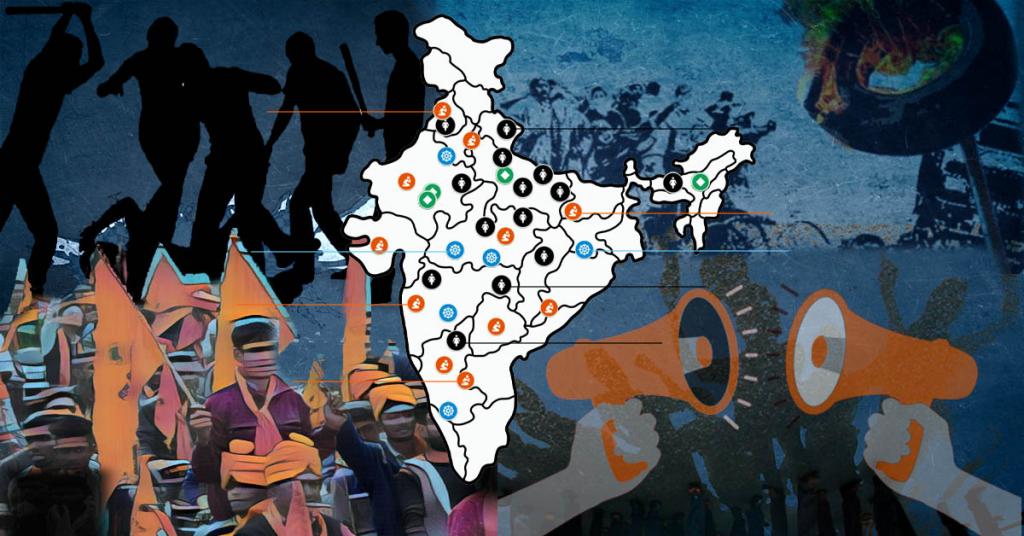
It is not just Holi, but a public celebration of all religious and political festivals tends to take a grotesque image through its enabling culture of violence and harassment. In the current political scenario, it is only a small section of the population, mainly men from the upper caste and Hindu backgrounds, are allowed to occupy the public domain and celebrate. While at the same time, women and minorities are expected to stay indoors and remove themselves from the public sphere so as to not invite any unwanted attention to them.
Also Read: Holi has Become Yet Another Normalised Tool Of Sexual Harassment
It is this gendered and religious supremacist nature of celebration that influences most cultural and socio-political celebrations in India. It dictates which section of society is allowed any kind of celebrations and which aspects of public life are accessible to them. It reinforces the notion that public spaces should only be made accessible to the most privileged section of society and anyone else who dares to venture out carries the onus of any violence that falls upon them. This year on Holi, Delhi Police’s Control Room reported having received 35,000 complaints while on a daily average, they tend to receive about 24,000 complaints.
Another video of a burqa-clad woman travelling in an e-rickshaw in Bareilly, UP, shows a scene of harassment of the same nature. Water was thrown at her and her companion despite her protests. Hindu nationalists posted this video while bragging with a crude song about putting colours on women’s blouses without their consent.
In Kolkata, the police made over 400 arrests on the grounds of unruly behaviour and public nuisance coupled with drunken brawls. After the election results, similar statistics are laid out in most cities, towns and villages where women and minorities become victims of political clashes and violent outbursts.
Religious minorities suffer from threats of violence, especially during religious celebrations. In UP Muslim inhabitants of an area anticipating demolition and violence on Holi, covered up a Mosque ahead of the festival. They reported that their Hindu brothers could not even afford to reassure them of a peaceful celebration of the festival.
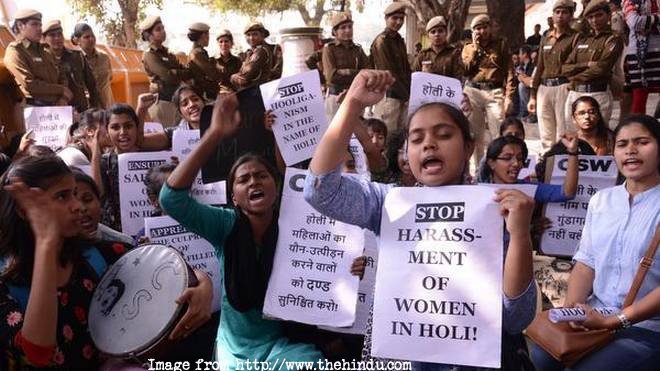
Another video of a burqa-clad woman travelling in an e-rickshaw in Bareilly, UP, shows a scene of harassment of the same nature. Water was thrown at her and her companion despite her protests. Hindu nationalists posted this video while bragging with a crude song about putting colours on women’s blouses without their consent.
Similarly, in Bhagwanpur Village of Shravasti district, UP, provocative songs were played to get a rise out of the Muslim community. Such incidents point to the fact that public celebrations of religious festivals have long lost their ethos of unity and collective joyfulness. In an environment of religious hostility and communalism, such celebrations only aim at targeting minority communities and establishing dominance over women through gender-based violence. During large processions and festivals, eve-teasing and sexual harassment often become normalised to the extent it is considered a part of the culture.
Also Read: The Angry Hindu Nationalist And The Melancholia Of Lost Masculinity
It is important to start a conversation around consent, especially during such public festivals. Public celebrations of any magnitude are not a licence to touch people without their explicit consent. While vigilant police patrol seems to be the obvious solution for mitigating such crimes, it is also true that police often function on similar biases that are rooted in the area in which they operate. In towns or villages, where taunts and provocation towards minority communities become more rampant during public celebrations, especially when they are sponsored by political parties or are associated with election results, civil servants should work towards protecting the minorities and enforcing unbiased patrol around the areas.
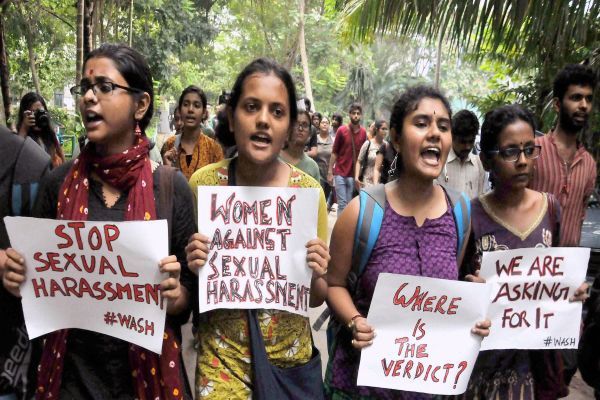
Any celebration can only become true to its foundational ethos of joyfulness if only people who participate learn to accommodate even those who do not share similar views as them. Without respecting the dignity of an individual, all celebrations ultimately become a public display of patriarchal violence that enables the subjugation of women and minorities in the nation. Such an approach towards public life through festivals once again proves how women are always barred from the public domain of celebration. It also shows how under a regressive political regime, religious celebrations often aim to target minority religious groups and communities rather than revelling on their own.
About the author(s)
Debabratee (she/they) is a student of English Literature at Jadavpur University. When they are not found reading or writing, they are found running after their pet dog and cuddling with him. They are avid binge-watcher of all kinds of OTT content and like to dissect and analyse them in their free time.
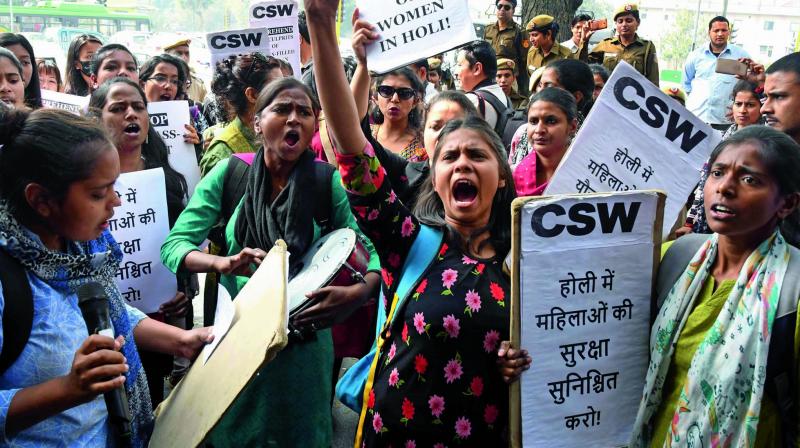
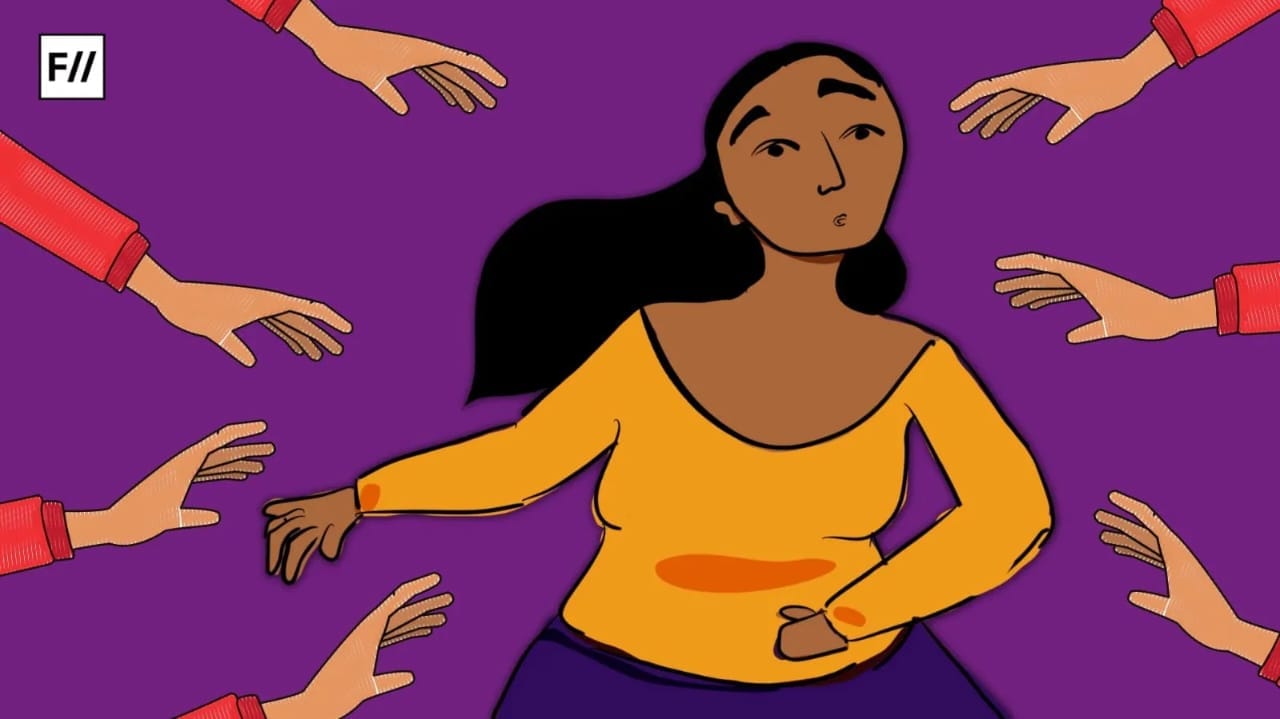

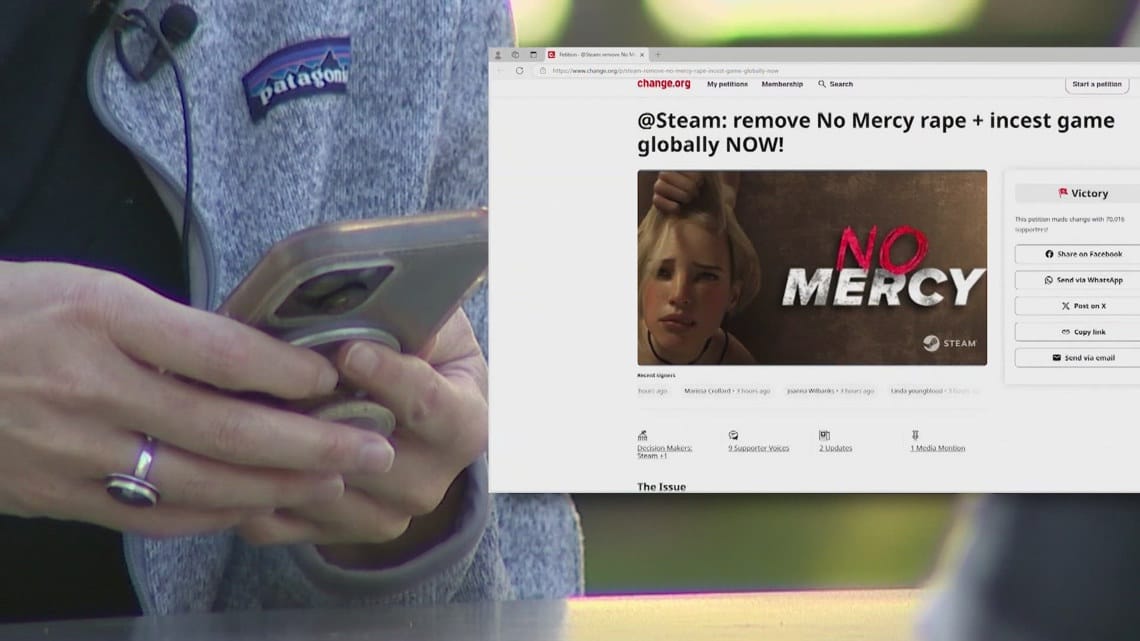

Cant see the original post.